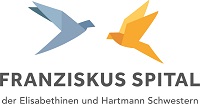Franziskus Hospital Margareten
The large 180° field of view allows us to view all areas from multiple sides. Tissue folds are smoothed out using an inflatable balloon and thus made accessible to the camera. This is how this new technology allows us to really see everything. This improves early detection even further!
OA Dr. Wolfgang Tillinger
Vienna (OTS) – Colonoscopy and gastroscopy are usually not very popular among patients. However, since colon cancer is still one of the most common cancers and early detection significantly increases the chances of recovery, this screening is an important and efficient preventive measure. Even with problems with the esophagus, lungs or stomach, images from inside the body often enable an accurate diagnosis. AI is now increasingly being used.
Process of an endoscopy: A journey inside our body
After a brief clarification of any drug allergies, light sedation (“twilight sleep”) is initiated. While the patient is pain-free and relaxed, the camera and light travel through the stomach, intestines, esophagus or lungs using a flexible, thin tube. Guided by experienced doctors and constantly monitored via a screen, the camera provides images of the respective area. In this way, the mucous membranes are examined for irregularities, tissue samples are taken (biopsies), intestinal polyps are removed or narrowings are widened. If necessary, individual images are saved in the report for documentation.
The patients and their vital functions are monitored throughout the procedure and then they recover in the recovery room.
High-tech makes endoscopy at Franziskus Hospital particularly gentle and the diagnosis even more precise
The Franziskus Hospital has recently been operating a state-of-the-art endoscopy system: for particularly gentle use, it has extremely slim and even more flexible examination instruments. The camera with a generous all-round view transmits highly enlarged, sharp and precise full HD images of the fine structure of the tissue to the monitor. With the help of different light spectra, blood vessels, inflammation or tissue changes can be made even more visible.
OA Dr. Wolfgang Tillinger: The large 180° field of view allows us to view all areas from multiple sides. Tissue folds are smoothed out using an inflatable balloon and thus made accessible to the camera. This is how this new technology allows us to really see everything. This improves early detection even further!
Twice is better: Experienced doctors and AI
Artificial intelligence (AI) is also used during colonoscopy. The current images are compared with thousands of images of healthy intestinal mucosa in fractions of a second and subtle deviations in the tissue are immediately identified. This means that even the smallest changes – such as mini polyps, which can develop into colon cancer – can be reliably identified and removed very early.
Colonoscopy not only provides an important advantage in the early detection, treatment and cure of colon cancer, but is also an efficient prevention against the development of colon cancer and thus maintains health.
Infobox – good to know:
The first endoscopic examination – a gastroscopy – was carried out on a sword swallower in 1868 by the German doctor Kussmaul.
Colon cancer is the second most common type of cancer in women and the third most common type of cancer in men. Early detection – e.g. through colonoscopy – improves the chances of recovery enormously.
Polyps are growths in the intestinal mucosa and can develop into colon cancer.
Around 1,200 endoscopic examinations are carried out every year at Franziskus Hospital.
Endoscopic examinations in the Franziskus Hospital
Colonoscopy – The intestine and its mucous membrane are examined and polyps can be removed at the same time.
Gastroscopy – endoscopic examination of the mucous membrane of the esophagus, Magen and part of the duodenum. Tissue samples can be taken or, for example, narrow areas can be treated.
ERCP – the endoscopic examination of the bile ducts and the pancreatic duct. For example, stones that lead to a blockage of the bile duct can be removed.
Bronchoscopy – Method for examining the trachea and bronchi – including for tissue removal (biopsies) in these areas.
They will be (Endobronchial ultrasound) – is used to examine the bronchial system and the neighboring structures, especially the lymph nodes located there, and to take tissue samples.
EUS – a combination of endoscopy and ultrasound, which also makes deep changes in the mucous membrane visible.
Questions & Contact:
FRANCIS HOSPITAL
Claudia Roithner-Klaus
Corporate communications
01 54 605 – 2463
claudia.roithner-klaus@franziskusspital.at
www.franziskusspital.at
